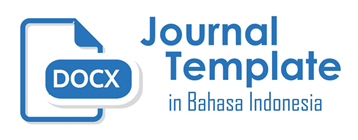MITIGASI DAN STRATEGI INDONESIA DALAM MENGHADAPI TARIF TRUMP JILID KEDUA
DOI:
https://doi.org/10.59408/bjgs.v3i2.231Keywords:
International Trade, Tariff, Protectionism, Neomercantilism, TrumpAbstract
In the contemporary era, economic power has become a key pillar in determining a country’s strategic position within the global political order. International trade is now facing serious challenges due to the implementation of protectionist policies by the United States (US) under the second term of President Donald Trump. The US has imposed high tariffs on several of its trading partners, including Indonesia. This phenomenon reflects a significant shift in US economic policy, which now leans more toward neo-mercantilism. As a result, Indonesia faces several major risks, including declining competitiveness, export levels, investment flows, a potential wave of layoffs, and economic slowdown. This study analyzes the impact of the US’s second wave of protectionism, particularly on Indonesia’s manufacturing industry, from the perspective of international political economy using a qualitative approach. Furthermore, the study evaluates strategic measures that the Indonesian government can adopt, including renegotiation with the US, expansion into non-traditional markets, and strengthening national competitiveness. The findings of this study are expected to serve as a reference for the government in formulating resilient and adaptive strategies in response to the dynamics of global protectionism.References
Atkinson, R. D. (2012). Enough is Enough: Confronting Chinese Innovation Mercantilism. The Information Technology and Innovation Foundation.
Aswicahyono, H., & Rafitrandi, D. (2018). A Review of Indonesia’s Economic Competitiveness. Centre for Strategic and International Studies (CSIS) Indonesia. https://www.csis.or.id/publication/a-review-of-indonesias-economic-competitiveness
Badan Keahlian DPR RI. (2025). Dampak Kenaikan Tarif Impor AS terhadap Indonesia: Tantangan dan Peluang Baru.
Badan Pusat Statistik. (2025). Proporsi Tenaga Kerja pada Sektor Industri Manufaktur (Persen), 2024. Badan Pusat Statistik. https://www.bps.go.id/id/statistics-table/2/MTIxNyMy/proporsi-tenaga-kerja-pada-sektor-industri-manufaktur--persen-.html
Balaam, D. N., & Dillman, B. (2019). Introduction to International Political Economy (7th ed.). Routledge.
Balassa, B. (1963). An Empirical Demonstration of Classical Comparative Cost Theory. The Review of Economics and Statistics, 45(3), 231–238.
Cohn, T. H., & Hira, A. (2021). Global Political Economy: Theory and Practice (8th ed.). Routledge.
Ghosh, P. (2024). International Political Economy: Contexts, Issues and Challenges. Routledge.
Grossman, G. M., & Helpman, E. (1994). Protection for Sale. The American Economic Review, 84(4), 833–850. http://www.jstor.org/stable/2118033
Helleiner, E. (2021). The Neomercantilists: A Global Intellectual History. Cornell University Press. http://www.jstor.org/stable/10.7591/j.ctv1fkgbsj
Institute for Development of Economics and Finance. (2025). Manufacturing, Investment and Trade Update.
International Monetary Fund. (2019). Macroeconomic Consequences of Tariffs.
Kementerian Koordinator Bidang Perekonomian. (2025). Sebagai Early Mover, Indonesia Berikan Penawaran yang Comprehensive dan Fair Kepada AS. Kementerian Koordinator Bidang Perekonomian. https://www.ekon.go.id/publikasi/detail/6338/sebagai-early-mover-indonesia-berikan-penawaran-yang-comprehensive-dan-fair-kepada-as
Kementerian Perdagangan. (2025). Monthly Trade Figure: Mei 2025. Kementerian Perdagangan.
Lall, S. (2001). Competitiveness Indices and Developing Countries: An Economic Evaluation of the Global Competitiveness Report. World Development, 25(9), 1501–1525. https://doi.org/10.1016/S0305-750X(01)00051-1
Lee, J.-W., & Pyun, J. H. (2013). Does Trade Integration Contribute to Peace? (Working Papers on Regional Economic Integration No. 24). Asian Development Bank. http://dx.doi.org/10.2139/ssrn.2333070
Lim, T. C. (2014). International Political Economy: An Introduction to Approaches, Regimes, and Issues. The Saylor Foundation.
Lucas, R. E., Jr. (1988). On the Mechanics of Economic Development. Journal of Monetary Economics, 22(1), 3–42. https://doi.org/10.1016/0304-3932(88)90168-7
Markusen, J. R. (1995). The Boundaries of Multinational Enterprises and the Theory of International Trade. Journal of Economic Perspectives, 9(2), 169–189.
Martin, L. L. (Ed.). (2015). The Oxford Handbook of the Political Economy of International Trade. Oxford University Press.
O’Brien, R., & Williams, M. (2020). Global Political Economy: Evolution and Dynamics (6th ed.). Bloomsbury Academic.
Peterson Institute for International Economics. (2025). Trump’s Trade War Timeline: An Up-to-Date Guide.
Puspitawati, E. (2021). Indonesian Industrialization and Industrial Policy: Peer Learning from China’s Experiences. United Nations Conference on Trade and Development (UNCTAD). https://unctad.org/project/south-south-integration-and-sdgs-enhancing-structural-transformation-key-partner-countries
Ravenhill, J. (2020). Global Political Economy (6th ed.). Oxford University Press.
Romer, P. M. (1986). Increasing Returns and Long-Run Growth. The Journal of Political Economy, 94(5), 1002–1037. http://links.jstor.org/sici?sici=00223808%28198610%2994%3A5%3C1002%3AIRALG%3E2.0.CO%3B2-C
Santos-Paulino, A., & Thirlwall, A. P. (2004). The Impact of Trade Liberalisation on Exports, Imports and the Balance of Payment of Developing Countries. The Economic Journal, 114, F50–F72.
Stern, R. M. (1962). British and American Productivity and Exports: A Comment. Oxford Economic Papers, 14(3), 305–307.
The White House. (2025). Annex I. The White House. https://www.whitehouse.gov/wp-content/uploads/2025/04/Annex-I.pdf
Thirlwall, A. P., & Pacheco-López, P. (2017). Economics of Development: Theory and Evidence (10th ed.). Bloomsbury Academic.
Todaro, M. P., & Smith, S. C. (2015). Economic Development (12th ed.). Pearson.
Trade Map. (2025). Trade Statistics for International Business Development. Trade Map. https://www.trademap.org
United Nations Conference on Trade and Development. (2025). Escalating Tariffs: The Impact on Small and Vulnerable Economies.
United States Trade Representative. (2025). 2025 Trade Policy Agenda and 2024 Annual Report of the President of the United States on the Trade Agreements Program.
Verico, K. (2021). What has been happening to Indonesia’s Manufacturing Industry? (LPEM FEB UI Working Paper No. 202158). Faculty of Economics and Business, University of Indonesia.
Verma, K. K. (2016). Impact of Chinese Mercantilism State on India. Journal Global Values, 7(2), 1–8.
World Bank. (1993). The East Asian Miracle: Economic Growth and Public Policy.
World Bank. (2025). Global Economic Prospects.
World Economic Forum. (2025). Global Economic Futures: Productivity in 2030.
World Trade Organization. (2025). Global Trade Outlook.
Downloads
Published
How to Cite
Issue
Section
License
Copyright (c) 2025 Erwin Miftahudin, Rizalul Kalam, Muhammad Hanif Abdurrahman

This work is licensed under a Creative Commons Attribution-NonCommercial-ShareAlike 4.0 International License.










